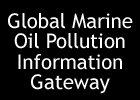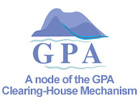|
|
|
Arctic
Environmental Protection Strategy
The
Arctic
Environmental Protection Strategy AEPS established in 1991
with the objectives to:
-
protect the Arctic ecosystems, including humans;
-
provide for the protection, enhancement and restoration
of environmental quality and sustainable utilization of
natural resources, including their use by local populations
and indigenous peoples in the Arctic;
-
recognize and, to the extent possible, seek to accommodate
the traditional and cultural needs, values and practices
of indigenous peoples as determined by themselves, related
to the protection of the Arctic environment;
-
review regularly the state of the Arctic environment; to
identify, reduce and, as a final goal, eliminate pollution.
The
five programmes established under the AEPS are:
-
Arctic
Monitoring and Assessment Programme (AMAP)
. An international organization established to implement
components of the AEPS. AMAP has responsibilities to monitor
the levels of, and assess the effects of, anthropogenic
pollutants in all compartments of the Arctic environment,
including humans. AMAP is now a programme group of the
Arctic Council, and its current objective is "providing
reliable and sufficient information on the status of,
and threats to, the Arctic environment, and providing
scientific advice on actions to be taken in order to support
Arctic governments in their efforts to take remedial and
preventive actions relating to contaminants".
-
Conservation
of Arctic Flora and Fauna (CAFF).
The Program for the Conservation of Arctic Flora and Fauna,
under the AEPS, was established to address the special
needs of Arctic species and their habitats in the rapidly
developing Arctic region. CAFF has responsibilities to
facilitate the exchange of information and coordination
of research on species and habitats of Arctic flora and
fauna.
-
Emergency
Prevention, Preparedness and Response (EPPR).
Established as an experts forum to evaluate the adequacy
of existing arrangements and to recommend the necessary
system of cooperation. Has responsibilities to provide
a framework for future cooperation in responding to the
threat of Arctic environmental emergencies. The EPPR
working group has among others developed an Arctic
Guide for Emergency Prevention, Preparedness and Response,
a Field Guide for Oil Spill Response in Arctic Waters,
Arctic Offshore and Oil Guidelines, well as set of Circumpolar
Maps of Resources at Risk from Oil Spills in the Arctic.
-
Protection of the Arctic Marine Environment (PAME).
Addresses policy and non-emergency response measures related
to protection of the marine environment from land-based
and sea-based activities. PAME has responsibilities to
take preventative and other measures, directly or through
competent international organizations, regarding marine
pollution in the Arctic, irrespective of origin.
-
Sustainable
Development. The Working Group on Sustainable Development
(SDWG)
was established by Arctic Ministers in 1998. The objective
is to protect and enhance the economies, culture and health
of the inhabitants of the Arctic, in an environmentally
sustainable manner.
|
Arctic
Council
The
Arctic
Council was established in 1996 in Ottawa, Canada. A high
level intergovernmental forum, the Council provides a mechanism
to address the common concerns and challenges faced by the Arctic
governments and the people of the Arctic. The members of the
Council are Canada, Denmark, Finland, Iceland, Norway, the Russian
Federation, Sweden, and the United States of America. The main
activities of the Council focus on the protection of the Arctic
environment and sustainable development as a means of improving
the economic, social and cultural well-being of the north. At
the AEPS Ministerial meeting in 1997, the existing working groups
of the Arctic Environmental Protection Strategy (AEPS) were
integrated within the Council. |
Barents
Euro-Arctic Council
The
Barents Euro-Arctic
Council (BEAC) is the forum for intergovernmental co-operation
in the Barents Region with seven participants: Denmark, Finland,
Iceland, Norway, Russia, Sweden, and the European Commission.
Nine other countries are observers: Canada, France, Germany,
Italy, Japan, Netherlands, Poland, United Kingdom, and the USA.
The
BEAC was established in 1993 "to support and promote regional
co-operation in the northernmost parts of Sweden, Norway, Finland
and northwest Russia.
The
BEAC should encourage sustainable economic and social development
in the Barents Region and thus contribute to peaceful development
in the northernmost part of Europe". The activities of
the BEAC have successively expanded to include a number of
working areas. Working groups with representatives from the
countries concerned, have been established to deepen co-operation
on issues relevant to the Barents Region. The working
groups consists of national or regional officials and experts.
Some working groups have also created expert Task Forces.
There are working groups on Economic Co-operation, Energy,
Environment, Exchanges, Health, Northern Sea Route, Transport,
Youth, and Barents rescue. The present priorities of the working
group on environment are energy efficiency, sustainable forestry/forest
management, nature protection/biodiversity conservation, industrial
pollution, cleaner production, integration of environmental
concerns in economic sectors, and strengthening of local actions.
|
Paris
Memorandum of Understanding on Port State Control
The
Paris Memorandum
of Understanding on Port State Control consists of 19 participating
maritime administrations and covers the waters of the European
coastal states and the North
Atlantic basin from North America to Europe. It aims at eliminating
the operation of sub-standard
ships through a harmonized system of port state control. Annually,
over 18,000 inspections take
place on board foreign ships in the Paris MoU ports, ensuring
that these ships meet international
safety and environmental standards, and that crew members have
adequate living and working
conditions. See, for example, a list of banned ships (ships
that jump detention or fail to call at an
indicated repair yard are banned: these ships will be refused
access to any port in the region of the
MoU), as well as a list with photos of number of rustbucket
vessels. Similar MoUs have been
developed for the Mediterranean, Asia (the Tokyo MoU), Latin
America (the Vina del Mar MoU), and
Indian Ocean (Indian Ocean MoU). |
OSPAR
Convention • OSPAR Commission
The
1992 Convention
on the Protection of the Marine Environment of North-East Atlantic
(including part of the Arctic) — OSPAR Convention —
replaced the 1972 Oslo Convention (pollution by dumping) and
the 1974 Paris Convention (pollution from land-based sources).
The OSPAR Convention requires that Contracting Parties 'shall
take all possible steps to prevent and eliminate pollution and
shall take the necessary measures to protect the maritime area
against the adverse effects of human activities so as to safeguard
human health and to conserve marine ecosystems and, when practicable,
restore marine areas which have been adversely affected.' The
detailed provisions for controlling pollution from different
sources and protecting ecosystems and biodiversity are set out
in the five annexes to the Convention. OSPAR Annex III - on
the prevention and elimination of pollution from offshore sources.
OSPAR's Offshore
Oil and Gas Industry Strategy.
The
OSPAR Quality Status Report - OSPAR
QSR
published in 2000 is
the assessment by the OSPAR Commission of the environmental
quality of the North-East Atlantic. The QSR 2000 is based
on five reports (regional QSRs) prepared for the Arctic Waters,
the Greater North Sea, the Celtic Seas, the Bay of Biscay
and Iberian Coast, and the Wider Atlantic.
Commission
The OSPAR
Commission is the Executive body of the Convention. At
the 1998 Ministerial Meeting of the OSPAR Commission, the
Ministers adopted the Sintra
Statement setting out the political impetus for future
action by the Commission. It includes a section related to
the environmental impacts of shipping stating, inter alia,
that the
OSPAR countries will co-operate especially in the work of
the International Maritime Organization, to tackle threats
to the marine environment from shipping through promoting
better waste reception facilities and their more effective
use including harmonised arrangements to remove economic,
administrative or organisational incentives for ships not
to use port waste reception facilities.
|
EU
Northern Dimension
The
Northern Dimension is "the external and cross-border
policies of the European Union covers the Baltic Sea region,
Arctic Sea region and North West Russia. It addresses the specific
challenges of those regions and aims to increase cooperation
between the EU member states, the EU applicant countries and
Russia. The Northern Dimension is implemented within the framework
of the Europe Agreements with the Baltic States, the Partnership
and Cooperation Agreement with Russia and the European Economic
Area regulations. The areas for cooperation under the Northern
Dimension are the environment, nuclear safety, energy cooperation,
Kaliningrad, infrastructure, business cooperation, Justice and
Home Affairs, social development and others. " The Northern
Dimension "aims to intensify cross border cooperation between
the EU and its neighbouring countries and regions in northern
Europe. It aims to create security and stability in the region,
as well as building a safe, clean and accessible environment
for all people in the north".
The
Northern Dimension is a common undertaking of the European
Communities and the EU Member States together with partner
countries. The Commission plays a leading role in implementing
the Action Plan. The main regional organization and IFIs active
in supporting the Northern Dimension are the Council of the
Baltic Sea States (CBSS), the Barents Euro Arctic Council
(BEAC), the Arctic Council (AC), the European Bank for Reconstruction
and Development (EBRD), the Nordic Investment Bank (NIB),
the Nordic Environment Finance Corporation (NEFCO), and the
Nordic Project Fund (NOPEF).
|
UN Economic Commission for Europe, UNECE
The
primary goal of the UN
Economic Commission for Europe (UNECE) is to encourage greater
economic cooperation among its member States. It focuses on
economic analysis, environment and human settlements, statistics,
sustainable energy, trade, industry and enterprise development,
timber and transport. UNECE activities include policy analysis,
development of conventions, regulations and standards, and technical
assistance. It has 55 member States, and over 70 international
professional organizations and other non-governmental organizations
take part in UNECE activities. The UNECE provides the Secretariat
for several environmental conventions, including the Convention
of the Protection and Use of Transboundary Watercourses and
International Lakes (see more on the UNECE Environment
and Human Settlements Division). |
UNEP
Regional Office for Europe
UNEP's
Regional Office for Europe promotes intergovernmental policy
dialogue and regional cooperation, increases national capacity
for environmental management and response emergencies, raises
awareness and enhances information exchange, and translates
global policies into regional action. |

|
|


